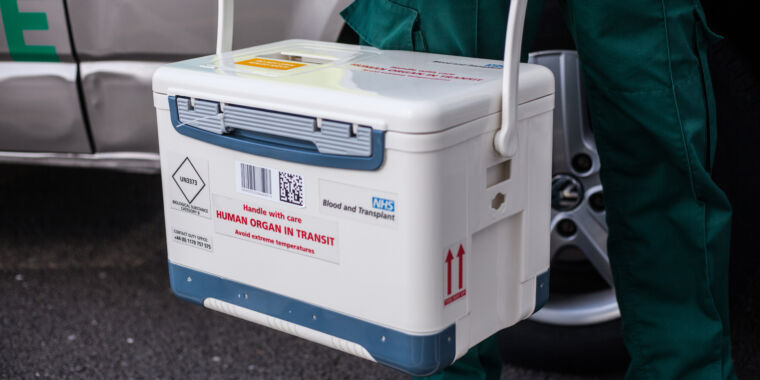

Health officials in Wisconsin are investigating what could be the first child death in the US—and the second worldwide—linked to a growing international outbreak of unexplained liver inflammation, aka hepatitis, in children.
In a health alert Wednesday, Wisconsin health officials said they are investigating four cases of unexplained hepatitis in children that match the profile of the outbreak cases. Two of the cases were severe, with one leading to a liver transplant and the other being the fatality.
Wisconsin is at least the fifth US state to report cases of mysterious and severe hepatitis in children. Earlier this month, Alabama health officials initially reported nine cases, which occurred between October 2021 and February 2022. Five of the cases occurred last November in the same large children’s hospital in the state, and three of those cases involved acute liver failure.
That raised a red flag for medical experts because unexplained liver inflammation and injury is uncommon in children. Health experts have said they typically see just a few sporadic cases in a year. After Alabama health officials became suspicious of the five November cases, they identified the four others. Of the nine cases, two required liver transplants, but none were fatal.
Amid national and international alerts, North Carolina also reported two cases in school-aged children, neither of which required liver transplants. On Monday, officials in Illinois said they had identified three suspected cases in children under the age of 10, one of which resulted in a liver transplant. And on Thursday, officials in California said they were investigating seven cases but did not provide further details.
International outbreak
The US cases join more than 160 reported worldwide. The United Kingdom, which first sounded the alarm over the outbreak, has reported the most, with at least 114 cases this year. Other countries that have reported cases include: Spain (13 cases), Israel (12), Denmark (6), Ireland (<5), The Netherlands (4), Italy (4), Norway (2), France (2), Romania (1), Belgium (1), and Japan (1).
The ages of the children stricken in the outbreak range from 1 month to 16 years, though most are under 10 and many are under 5. According to the World Health Organization, 17 children in its most recent tally (which doesn’t include many of the US cases) required transplants, which is about 10 percent. One child in their tally, which does not include the Wisconsin cases, has died.
The common symptoms include abdominal pain, diarrhea, vomiting, jaundice, and increased levels of liver enzymes. Most of the cases have not presented with a fever.
Health experts worldwide are working to understand the cause of the puzzling illnesses. The children consistently test negative for viruses known to cause hepatitis, namely hepatitis viruses A, B, C, D, and E. Epidemiology data has failed to find any link to common foods, medicines, toxins, environmental exposures, or international travel. Some of the cases, but not all, have tested positive for the pandemic coronavirus. The vast majority have not been vaccinated against COVID-19, ruling out vaccine adverse events as a possibility.
Suspects and speculation
The prime suspect remains an adenovirus, particularly adenovirus type 41. But that is also puzzling. There are more than 50 types of adenoviruses that infect humans. They mainly cause colds, but also gastroenteritis, conjunctivitis (pink eye), and sometimes disseminated infections. Adenoviruses have occasionally been linked to hepatitis, but mainly in immunocompromised children. The children sickened in the hepatitis outbreak are frequently reported to have been previously healthy—not immunocompromised.
But at least 74 of the children in the outbreak have tested positive for an adenovirus, with subtyping frequently detecting adenovirus type 41. In England and Scotland, for instance, 75.5 percent and 50 percent of cases, respectively, tested positive for adenovirus. Subtyping of 11 cases done in a UK investigation found that all 11 were adenovirus type 41, according to European Centre for Disease Prevention and Control (ECDC). And in Alabama, the cluster of five cases from November also all tested positive for type 41.
Adenovirus 41 has not previously been linked to hepatitis. Infections usually present with diarrhea, vomiting, respiratory symptoms, and fever.
In an alert Thursday, the ECDC noted that their “current leading hypothesis is that a cofactor affecting young children having an adenovirus infection, which would be mild in normal circumstances, triggers a more severe infection or immune-mediated liver damage.”
But, other hypotheses as to the possible cause are also still swirling. They include a newly evolved adenovirus variant, an adenovirus-SARS-CoV-2 coinfection, a rare outcome of an omicron infection, or a yet-unidentified SARS-CoV-2 variant. WHO has also suggested hepatitis cases could be a rare outcome that has always been possible from a common adenovirus. However, cases appear more prevalent now because more immunologically naïve children are getting adenoviruses simultaneously following the lift of pandemic restrictions, WHO said.
Health officials worldwide ask clinicians to be on the lookout for cases and have provided testing guidance for suspect cases. WHO has also called for international data sharing. In the meantime, the ECDC concluded that: “Considering the unknown aetiology, the affected pediatric population, and the potential severe outcome, this currently constitutes a public health event of concern.”